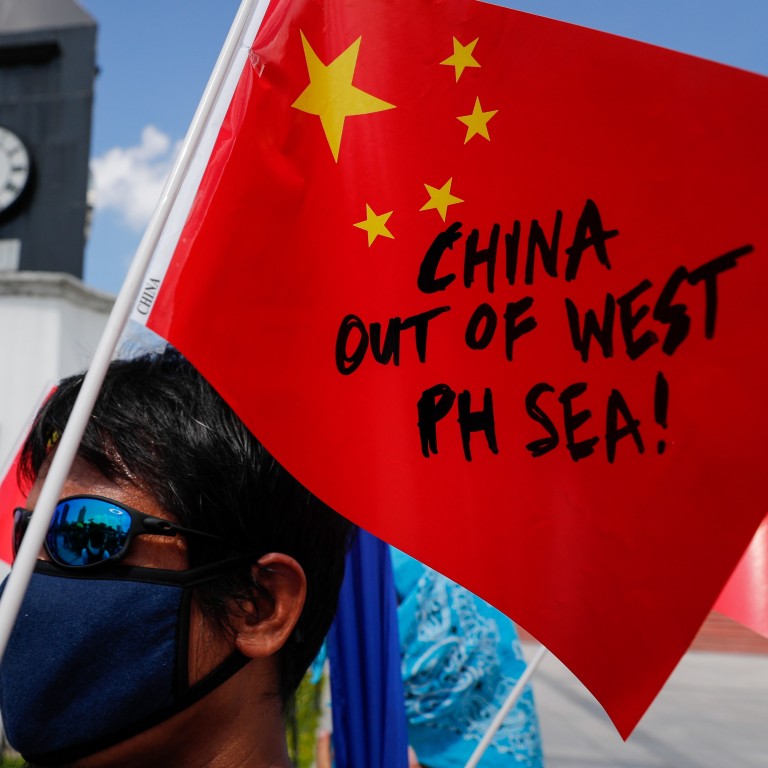
China accused of entering ‘grey zone’ between war and peace to assert control in disputed waters
- US think tank Rand Corporation says Beijing’s increased assertiveness in East and South China seas falls ‘below the threshold of armed conflict’
- Report says lines between civilian and military are being blurred, citing use of ‘navy reservists’ to crew fishing vessels used to assert control over territory
China is using a number of tactics that fall in the “grey zone between peace and war” to advance its interests in the disputed East and South China seas, according a leading US defence think tank.
In a report analysing China and Russia’s “coercive” actions, the Washington-based Rand Corporation also proposed a number of military and diplomatic measures America could take to counter China in the strategic waters.
Rand, which is partly funded by the US government, said Washington expected its rivalry with China and Russia to be played out “primarily below the threshold of armed conflict, in what is sometimes termed the grey zone between peace and war”.
Examples of the grey zone tactics used by Beijing included the expansion of artificial islands, the use of coastguard vessels and maritime militia and “a group of civilian fishermen who receive military training and coordinate their actions under state and military guidance” to assert control over disputed islands and reefs.
The report said it had stepped up its use of such tactics in recent years against rival claimants such as Japan, Vietnam and the Philippines.
In October 2012, seven PLA Navy warships passed through the contiguous zone near Yonaguni Island, a month after Japan nationalised the Senkaku, or Diaoyu, Islands, which are also claimed by China – the first time that Chinese naval vessels had “massed at contested borders”, according to the report.
Then in 2014, China began to fly its strategic H-6 bombers close to Taiwan and Japan, as well as into the Western Pacific and South China Sea.
“These flights serve strategic signalling purposes and are part of China’s efforts to normalise its military presence in those regions and near disputed waters and territory,” the report said.

China was also accused of using non-military vessels nominally manned by civilian personnel as “maritime militia”. “These operators are in reality, naval reservists trained in naval operations,” the report said.
The research also cited China’s “cabbage strategy” – a phrase first coined by retired rear admiral Zhang Zhaozhong – which is designed to surround a contested areas in operational layers with a maritime militia, maritime law enforcement and navy warships working together.
Under this strategy the warships are positioned the farthest away from the target to avoid escalation but still ensure a military presence.

Furthermore, researchers said Beijing had been using state-owned energy and engineering companies as strategic tools to advance Chinese interests in disputed areas.
Wang Yilin, former chairman of the offshore oil giant CNOOC, was quoted in the report as saying that “large deepwater drilling rigs are our mobile national territory and a strategic weapon for promoting the development of the country’s offshore oil industry”.
Tianjin Dredging Company, a subsidiary of China Communications Construction Company Dredging, operated most of the barges involved in the dredging of Mischief, Subi and Fiery Cross reefs in the contested Spratly Islands, the report said.

At least 23 Chinese state-owned enterprises were said to have taken part in land reclamation and construction projects in the South China Sea – works that have often led to the build-up of military personnel and equipment.
In response to China’s grey zone activities, Rand researchers suggested that the US should deploy anti-ship missile units in Japan and the Philippines.
It was also proposed that the US Navy could be used to escort Philippine oil exploration or drilling vessels in its exclusive economic zone, while its coastguard could take part in joint patrols with allies in the South China Sea.
The final suggestion was that Washington broaden its diplomatic approach by involving more European countries in joint actions to counter Beijing.

